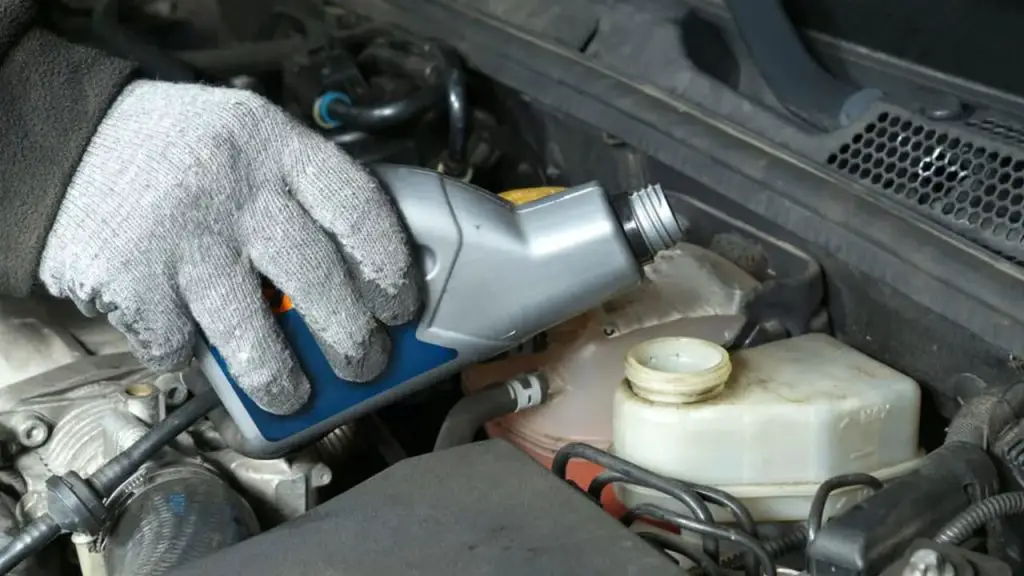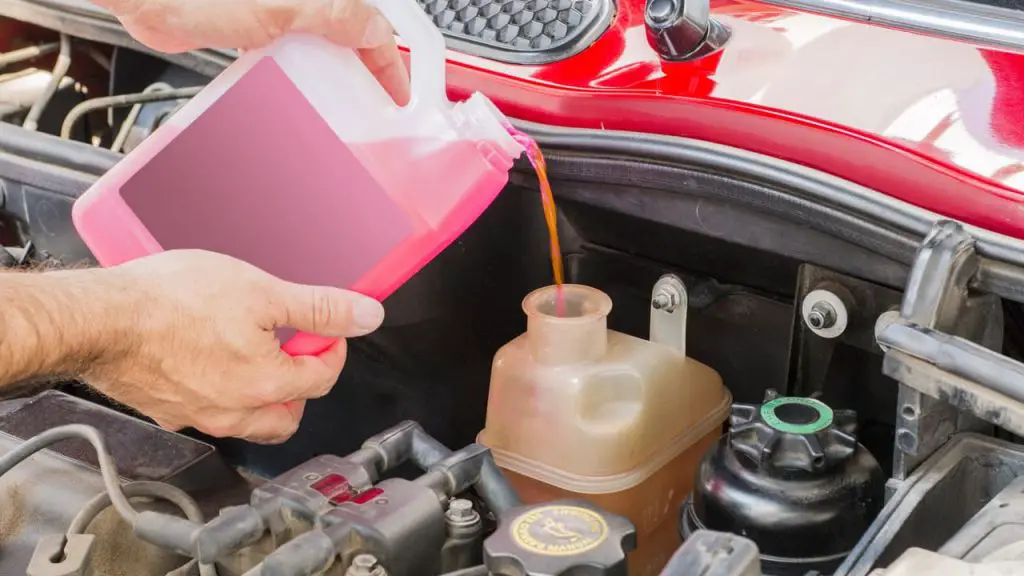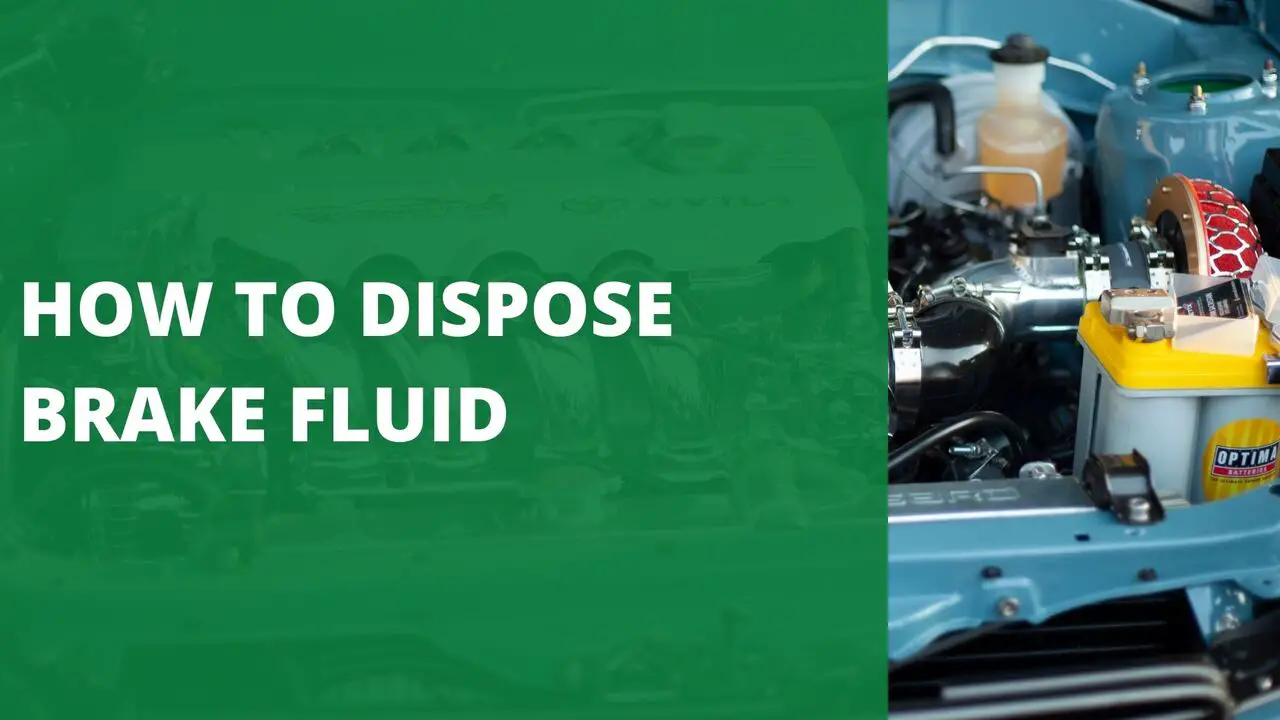Brake fluid is essential for keeping a vehicle’s brakes working smoothly. However, it’s crucial to be aware that this liquid is both toxic and flammable, underscoring the importance of proper disposal.
Mishandling brake fluid can lead to contamination of soil and groundwater, posing risks to both the environment and people.
As responsible vehicle owners, it’s crucial to understand the correct methods for disposing of brake fluid to protect our communities and the environment.
This guide will explore responsible ways to dispose brake fluid, addressing common questions and offering insights into sustainable practices.
But before we get into the methods of disposal, let’s take a moment to grasp the nature of brake fluid and why careful disposal is so important.
Is Brake Fluid Flammable?

Brake fluid is a crucial part of a vehicle’s braking system, responsible for transmitting force from the brake pedal to the brake pads, leading to the vehicle’s slowing down.
Common types include DOT 3, DOT 4, and DOT 5, and despite their specific purposes, they all share a common trait – they can catch fire.
The flammability of brake fluid comes from its low flash point. This point is the temperature at which a substance releases enough vapour to ignite when exposed to an open flame or spark.
For brake fluid, its low flash point means it can easily catch fire under specific conditions. This is particularly true for DOT 5 brake fluid, which is silicone-based.
The fact that brake fluid can catch fire requires careful handling and disposal. If brake fluid meets a hot surface or an open flame, it can ignite, posing a fire hazard.
This becomes crucial during disposal, as improper handling could lead to accidents, risking both individuals and the environment.
To manage brake fluid safely, it’s vital to take precautions during disposal. This involves avoiding exposure to open flames, sparks, and high temperatures.
Additionally, using appropriate containers designed for flammable liquids and following established guidelines for disposal are essential steps to reduce the risks associated with the flammable nature of brake fluid.
The Environmental Impact of Incorrect Brake Fluid Disposal
Brake fluid is a carefully crafted combination of chemicals meant to endure extreme conditions within a vehicle’s braking system.
While its effectiveness in this role is unquestionable, careless disposal can lead to severe consequences.
Improperly getting rid of brake fluid can have a detrimental impact on the environment, affecting soil, water sources, aquatic life, and even human well-being.
One major issue stemming from improper brake fluid disposal is the potential contamination of soil and water sources.
If not disposed of responsibly, whether through illegal dumping or inadequate waste management, brake fluid can infiltrate the ground, altering the soil composition.
The hazardous compounds found in brake fluid, such as glycol ethers, can then seep into the soil, posing a threat to the surrounding environment.
Improper disposal also jeopardizes water sources. Runoff from brake fluid may find its way into rivers, lakes, or other bodies of water, introducing harmful substances into aquatic ecosystems.
The toxic nature of brake fluid compounds can disrupt the balance of these ecosystems, impacting aquatic plants, animals, and microorganisms.
This disturbance can lead to a reduction in biodiversity and long-term ecological consequences.
The consequences of brake fluid disposal go beyond environmental damage and can potentially affect human health.
Contaminated soil and water sources can compromise the quality of drinking water, posing health risks to communities.
The toxicity of brake fluid has the potential to accumulate in the food chain, heightening the risk to human health. Furthermore, the flammability of brake fluid adds an extra layer of risk to the environment.
Improperly disposed brake fluid could increase the likelihood of wildfires, particularly in areas where flammable liquids can encounter ignition sources.
This not only endangers natural habitats but also poses a threat to nearby communities.
Now that we’ve explored the environmental consequences, let’s move on to the necessary steps for preparing brake fluid for responsible disposal.
Preparing Brake Fluid for Responsible Disposal

1. Identify the Type of Brake Fluid
When disposing of brake fluid, the first crucial step is determining its type, with common varieties being DOT 3, DOT 4, DOT 5.1, and DOT 5. Each type possesses distinct characteristics, making accurate identification vital.
For instance, DOT 3 and DOT 4, glycol-based fluids, are found in traditional braking systems, with DOT 4 being more resistant to high temperatures.
DOT 5.1 is known for its compatibility with anti-lock brake systems (ABS), requiring specific disposal procedures.
On the other hand, DOT 5 is silicone-based and less prone to moisture absorption.
Knowing the specific type ensures proper disposal methods are employed, preventing environmental harm and aligning with safety standards.
2. Segregate from Other Waste
To responsibly get rid of brake fluid, it’s crucial to keep it apart from your regular household trash. Mixing it with other car fluids or general garbage is not a good idea.
Separating brake fluid is important because it ensures that the fluid can be handled and processed correctly during disposal.
This not only follows environmental rules but also reduces the chance of contamination and makes it easier for waste management authorities to deal with the fluid more effectively.
Proper separation might seem like a small step, but it’s vital for environmental safety, preventing potential harm to people and nature alike.
3. Choose the Right Containers
When getting brake fluid ready for proper disposal, a crucial step is picking the right containers. Go for ones specifically made to safely store flammable liquids, given that brake fluid is flammable.
It’s important to steer clear of using containers that held food or drinks before, as any leftover traces could react badly with the brake fluid.
Ideally, these containers should be made from materials that won’t corrode or leak, ensuring the storage’s reliability and reducing the risk of environmental harm.
Using the right containers isn’t just about following guidelines; it’s a way for individuals to play their part in making the disposal process safer and more effective, lowering the potential dangers linked to mishandling or storing brake fluid incorrectly.
4. Check Local Regulations
Before you toss out the brake fluid, it’s really important to know the local rules about getting rid of hazardous waste.
Different places might have specific ways to handle and dispose of brake fluid, so it’s crucial to get familiar with those local regulations.
Following these rules isn’t just about staying on the right side of the law; it’s also a way to be environmentally responsible.
Knowing what’s expected in your area gives you helpful information on the right steps and methods for brake fluid disposal, reducing the potential impact on the environment and ensuring the safety of everyone in the community.
5. Label Containers Clearly
When you’re getting brake fluid ready for the right disposal, it’s important to put clear labels on the containers.
These labels should include key info like the specific type of brake fluid when you stored it, and any other important details.
Having clear labels is like using a language that waste management folks understand easily. It helps them identify and handle the material safely.
When containers are properly labelled, it lowers the chance of mix-ups or mistakes during the disposal process.
Besides making waste management more efficient, these labels also add to overall safety.
They ensure that brake fluid is handled accurately and securely, reducing potential risks to people and the environment.
6. Keep in a Cool, Dry Spot
After you’ve put labels on containers with brake fluid, it’s really important to store them in a cool, dry place away from the sun.
Where you store them makes a big difference in keeping the brake fluid in good shape for proper disposal.
If the fluid gets exposed to extreme temperatures or sunlight, it could start to break down, making the disposal process more complicated.
Storing the containers in a cool and dry spot is like giving the brake fluid a safe home, making sure it stays in good condition until it’s time to dispose of it.
This careful step not only adds to the safety and effectiveness of the disposal process but also follows responsible waste management practices.
7. Prevent Spills and Leaks
To dispose of brake fluid responsibly, it’s vital to be careful and prevent spills and leaks. Because brake fluid is flammable and can harm the environment, handling it cautiously is crucial.
If a spill does happen, it’s important to act right away. Clean up the spill quickly using materials that can soak up the fluid.
This proactive method doesn’t just reduce the chance of accidents but also keeps your working space clean and safe.
Properly containing brake fluid is a must to stop it from contaminating the soil and water, making sure ecosystems stay safe and sound.
8. Consult with Local Waste Management Authorities
Before getting rid of brake fluid, it’s a good idea to talk to your local waste management authorities.
Reaching out to them lets you find out about any collection programs or specific drop-off spots for hazardous waste, including brake fluid.
These local authorities know the best and most eco-friendly ways to dispose of it in your area.
When you consult with these experts, you get info that follows local rules, making sure you’re doing it safely and responsibly.
This active engagement builds a teamwork approach between individuals and waste management authorities, making waste disposal in the community more effective and environmentally friendly.
9. Consider Recycling
When you’re getting ready to dispose of brake fluid responsibly, don’t forget to consider recycling as a sustainable option.
Look into the recycling choices around you, as some places accept used brake fluid for recycling.
Choosing to recycle is a smart and environmentally friendly decision. It helps save resources and lessens the environmental impact linked with regular disposal methods.
By supporting recycling efforts, you’re actively playing a part in cutting down on waste and encouraging sustainable habits.
Recycling brake fluid isn’t just about lessening harm to the environment; it’s also part of the bigger effort to create a community that’s more aware and responsible about waste management.
10. Professional Disposal Services
Sometimes, people may choose to go for professional disposal services when dealing with brake fluid.
These services are specially set up to handle hazardous waste, like brake fluid, following strict safety and environmental rules.
Opting for professional disposal services offers a dependable and safe choice, especially for those who may not have the means or resources to dispose of brake fluid themselves.
These services usually have the know-how and facilities to manage hazardous materials effectively, lowering the chance of environmental harm and ensuring disposal meets the required standards.
Going for professional disposal services shows a commitment to safety and environmental responsibility.
It’s a practical solution for those looking for a thorough and expert-managed approach to getting rid of brake fluid.
Now that we’ve discussed how to dispose of it, let’s explore why recycling brake fluid is crucial.
Embracing Sustainable Practices: Recycling Brake Fluid
Choosing to recycle brake fluid is a forward-thinking and environmentally responsible way of getting rid of it, offering significant benefits in terms of both environmental protection and efficient resource use.
This sustainable approach is a better option compared to traditional methods like evaporation or hazardous waste disposal.
In recycling, used brake fluid is carefully processed to remove contaminants, making it suitable for reuse in different applications.
This not only prevents environmental damage linked with improper disposal but also tackles the growing issue of resource depletion.
Recycling brake fluid operates like a closed-loop system, contributing to the conservation of valuable resources.
Instead of just getting rid of the fluid, recycling facilities use advanced techniques to purify and refine it, ensuring the end product meets quality standards for reuse.
This not only reduces the need for new raw materials but also lessens the environmental impact of making and transporting new brake fluid.
Additionally, the recycling process aligns with the principles of a circular economy by creating a continuous and sustainable loop.
By reintroducing refined brake fluid into use, there’s less need for extensive disposal methods, resulting in a more efficient and eco-friendly system.
This stands in contrast to traditional methods that contribute to pollution, soil contamination, and resource depletion.
Conclusion
To sum up, responsibly getting rid of brake fluid is not just something we have to do by law; it’s also a moral duty to our environment.
When you follow the advice and embrace the eco-friendly methods we’ve talked about in this guide, you’re playing a part in making the world safer and cleaner for everyone.
We hope this guide has been useful to you, and we appreciate you taking the time to read it.
FAQ’s:
Can brake fluid be washed down the drain?
No, brake fluid should never be washed down the drain. It’s harmful to the environment and can contaminate water sources and soil.
Proper disposal methods, such as recycling or using designated collection facilities, are necessary.
Can brake fluid be put in waste oil?
No, brake fluid should not be mixed with waste oil. Brake fluid is a different type of fluid and needs separate disposal methods.
Mixing it with waste oil can cause environmental harm and complicate the recycling process.
Is brake fluid harmful to the touch?
Yes, brake fluid can be harmful to the touch. It’s a toxic substance that can cause skin irritation and should be handled with care.
If it comes into contact with the skin, wash the affected area thoroughly with soap and water.
How toxic is DOT 3 brake fluid?
DOT 3 brake fluid is toxic and should be handled with caution. It contains chemicals that can be harmful if ingested or if there is prolonged skin contact.
It’s important to follow safety guidelines during handling and disposal to minimize the risk of exposure.

